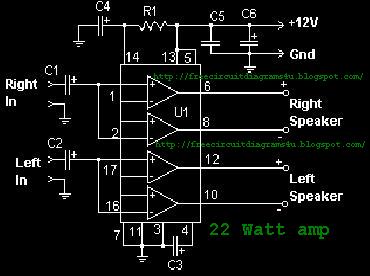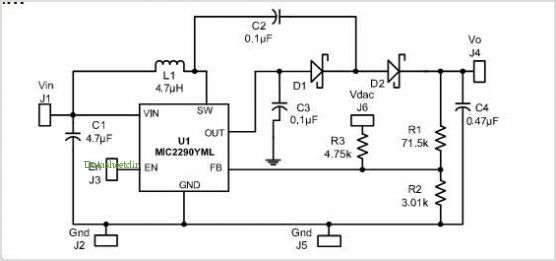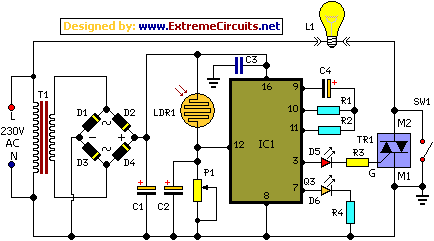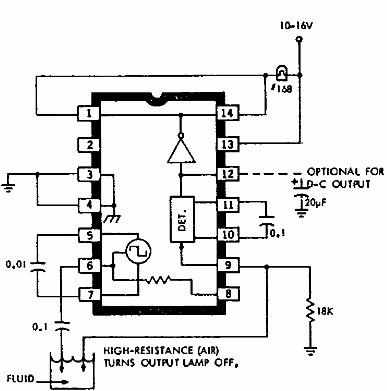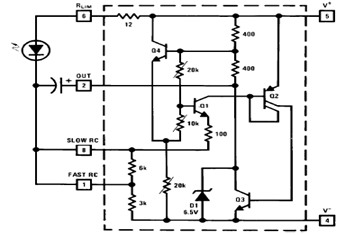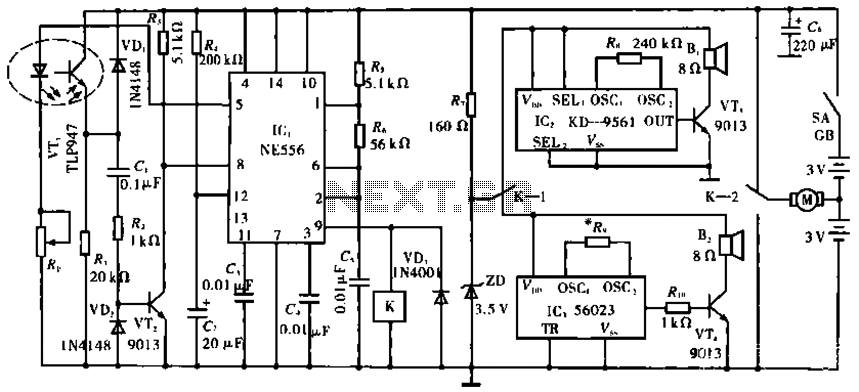
A common car inverter circuit diagram and working principle
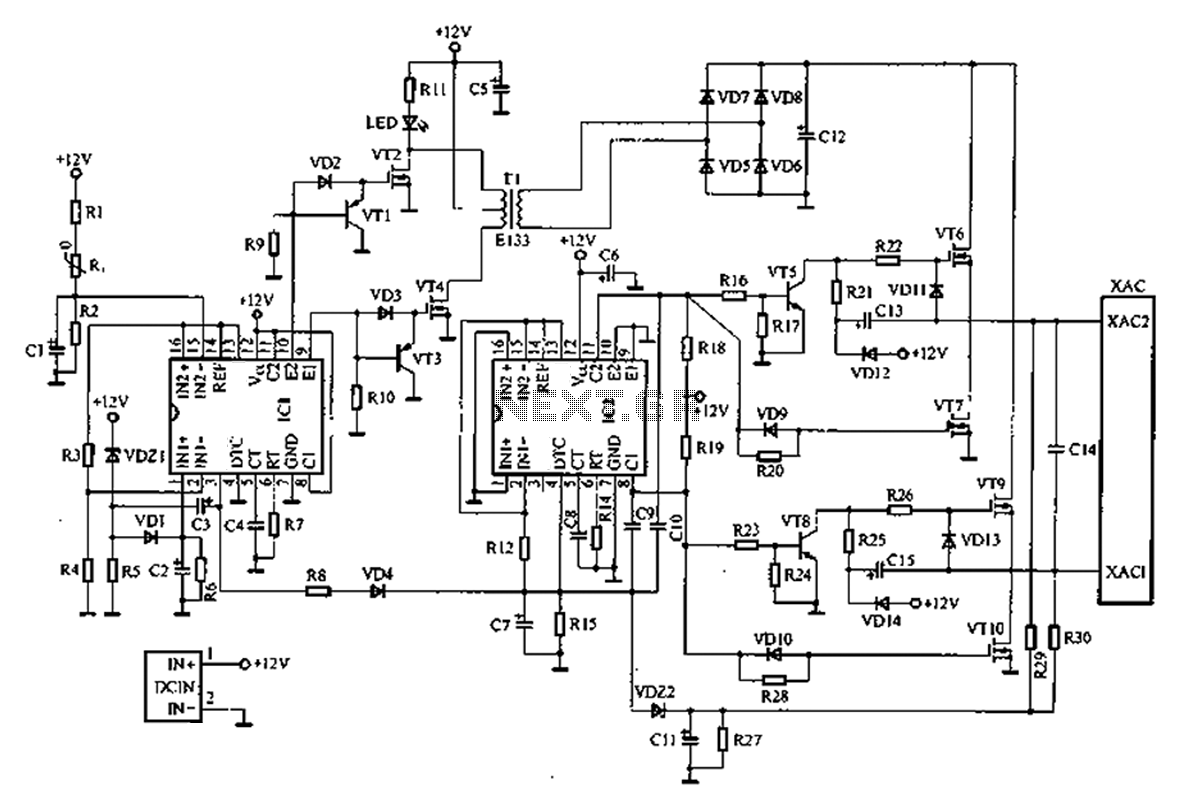
A common car inverter circuit and its working principle. Car inverter specifications include: Input voltage: DC 10V to 14.5V; Output voltage: AC 200V to 220V with a tolerance of 10%; Output frequency: 50Hz with a tolerance of 5%; Output power: 70W to 150W; Conversion efficiency: greater than 85%; Inverter operating frequency: 30kHz to 50kHz. The most widely sold car inverters on the market typically have an output power range of 70W to 150W. The inverter circuit primarily utilizes a TL494 or KA7500 chip-based pulse width modulation circuit. A common car inverter circuit schematic is illustrated in Figure 1.
The car inverter circuit serves the essential function of converting direct current (DC) from the vehicle's battery into alternating current (AC) suitable for powering various electronic devices. The input voltage range of DC 10V to 14.5V corresponds to the typical voltage levels found in automotive batteries, which can vary depending on the vehicle's state of charge and load conditions.
The output specifications indicate that the inverter generates AC voltage in the range of 200V to 220V, with a permissible deviation of 10%. This output is designed to match the voltage levels required by standard household appliances and electronic devices. The output frequency is maintained at 50Hz, with a tolerance of 5%, which aligns with the frequency used in most countries for AC power supply.
The inverter's output power capability ranges from 70W to 150W, making it suitable for a variety of applications, including charging mobile devices, powering small appliances, and operating tools. The conversion efficiency exceeding 85% signifies that the inverter operates effectively, minimizing energy loss during the conversion process.
The operating frequency of the inverter, which ranges from 30kHz to 50kHz, is crucial for the performance of the pulse width modulation (PWM) technique employed in the circuit. PWM allows for the regulation of the output voltage and power by varying the width of the pulses in the output waveform. The use of integrated circuits such as the TL494 or KA7500 is prevalent in these designs due to their reliable performance and ease of implementation in PWM control applications.
In summary, the common car inverter circuit is a vital component for converting vehicle DC power to usable AC power, with specifications tailored to meet the needs of various electronic devices while ensuring efficient operation. The schematic representation in Figure 1 serves as a visual guide for understanding the circuit's configuration and functionality.A common car inverter circuit and working principle Car Inverter indicators: Input voltage: DC 10V ~ 14.5V; Output Voltage: AC 200V ~ 220V 10%; Output frequency: 50Hz 5%; Outpu t power: 70W ~ 150W; conversion efficiency: more than 85%; the inverter operating frequency: 30kHz ~ 50kHz. Currently on the market sales of the largest, the most common car inverter output power of 70W-150W, the inverter circuit mainly uses TL494 or KA7500 chip-based pulse width modulation circuit.
One of the most common car inverter circuit schematic shown in Figure 1.
The car inverter circuit serves the essential function of converting direct current (DC) from the vehicle's battery into alternating current (AC) suitable for powering various electronic devices. The input voltage range of DC 10V to 14.5V corresponds to the typical voltage levels found in automotive batteries, which can vary depending on the vehicle's state of charge and load conditions.
The output specifications indicate that the inverter generates AC voltage in the range of 200V to 220V, with a permissible deviation of 10%. This output is designed to match the voltage levels required by standard household appliances and electronic devices. The output frequency is maintained at 50Hz, with a tolerance of 5%, which aligns with the frequency used in most countries for AC power supply.
The inverter's output power capability ranges from 70W to 150W, making it suitable for a variety of applications, including charging mobile devices, powering small appliances, and operating tools. The conversion efficiency exceeding 85% signifies that the inverter operates effectively, minimizing energy loss during the conversion process.
The operating frequency of the inverter, which ranges from 30kHz to 50kHz, is crucial for the performance of the pulse width modulation (PWM) technique employed in the circuit. PWM allows for the regulation of the output voltage and power by varying the width of the pulses in the output waveform. The use of integrated circuits such as the TL494 or KA7500 is prevalent in these designs due to their reliable performance and ease of implementation in PWM control applications.
In summary, the common car inverter circuit is a vital component for converting vehicle DC power to usable AC power, with specifications tailored to meet the needs of various electronic devices while ensuring efficient operation. The schematic representation in Figure 1 serves as a visual guide for understanding the circuit's configuration and functionality.A common car inverter circuit and working principle Car Inverter indicators: Input voltage: DC 10V ~ 14.5V; Output Voltage: AC 200V ~ 220V 10%; Output frequency: 50Hz 5%; Outpu t power: 70W ~ 150W; conversion efficiency: more than 85%; the inverter operating frequency: 30kHz ~ 50kHz. Currently on the market sales of the largest, the most common car inverter output power of 70W-150W, the inverter circuit mainly uses TL494 or KA7500 chip-based pulse width modulation circuit.
One of the most common car inverter circuit schematic shown in Figure 1.
